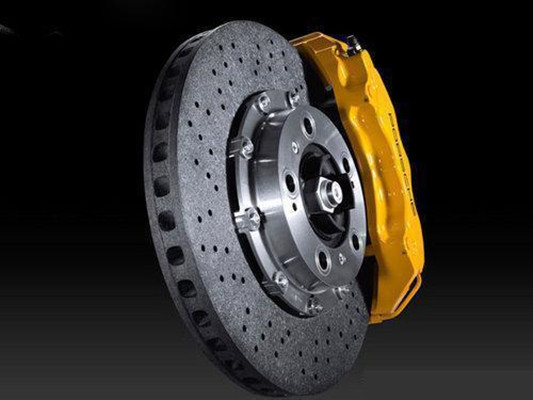The development trends of carbon ceramic materials in the new energy vehicle industry today
Industry trend: Carbon ceramic brake discs have become a "must - have option" for high - end vehicle models.
The carbon ceramic brake system is a braking device with carbon fiber-reinforced silicon carbide composite materials as its core. Through the collaborative operation of carbon ceramic brake discs, supporting calipers, and brake pads, carbon ceramic significance lies in significantly enhancing the braking safety, range efficiency, and handling stability of new energy vehicles and high-performance models through characteristics such as high temperature resistance, thermal decay resistance, and lightweighting. Carbon ceramic is a key component for the technological upgrading of high-end automobiles. This technical solution not only solves the defects of traditional metal brake discs such as easy thermal decay and heavy weight at high temperatures but also achieves a breakthrough improvement in braking performance through material innovation. Its technical advantages are not only reflected in the intuitive data of a 20%-30% reduction in braking distance but also redefine the technical standards of high-end braking systems through a 5-fold unsprung mass reduction effect, excellent heat dissipation performance, and environmental protection characteristics. The deep integration of materials and processes is the key to the performance leap of carbon ceramic brake discs and carbon ceramic brake systems.

As a core component of the braking system, the material of the brake disc determines the performance characteristics of the entire braking system. With the continuous improvement of new energy vehicles' requirements for range, performance, and safety, traditional cast iron brake discs have struggled to meet the needs of high-end vehicle models due to issues such as heavy weight and easy thermal decay. Carbon ceramic brake discs use carbon fiber-reinforced silicon carbide ceramic matrix composites as their core material. Compared with traditional cast iron brake discs, carbon ceramic brake discs have significant advantages in lightweighting, heat resistance, and wear resistance.
Future challenges: carbon ceramic costs, standards, and consumer awareness
Although carbon ceramic brake discs have become a "performance weapon" for high-end vehicle models with their core advantages such as lightweight, high temperature resistance, and thermal decay resistance, their large-scale popularization still faces three major challenges in terms of technology, market, and perception. If these issues cannot be effectively addressed, carbon ceramic brake discs may remain trapped in the "high-end niche" market for a long time, making it difficult to unleash their multi-billion-dollar market potential.
1. Cost threshold: The current cost per vehicle for carbon ceramic brake discs still mainly ranges from 8,000 to 15,000 yuan, and they are primarily used in models priced above 500,000 yuan. Although some enterprises have reduced the cost to 4,000-6,000 yuan through material optimization and process improvement, there is still a gap from the cost requirements of mainstream models priced at 200,000-300,000 yuan.
2. Lack of industry standards: Currently, there is a lack of unified performance testing standards for carbon ceramic discs in China. The verification cycle for automakers lasts 1-2 years. At present, the domestic carbon ceramic brake disc industry has no unified performance testing standards, so automakers need to independently formulate verification processes, covering bench testing, real-vehicle road testing, extreme working condition simulation and other links. The verification cycle is as long as 1-2 years, which increases the entry threshold for suppliers.
3. Consumer education: Some users misunderstand the "surface cracking" phenomenon of carbon ceramic brake discs, believing that the cracks are quality issues. In reality, this is their normal working state (micro-cracks formed in the coating at high temperatures can improve friction uniformity).

